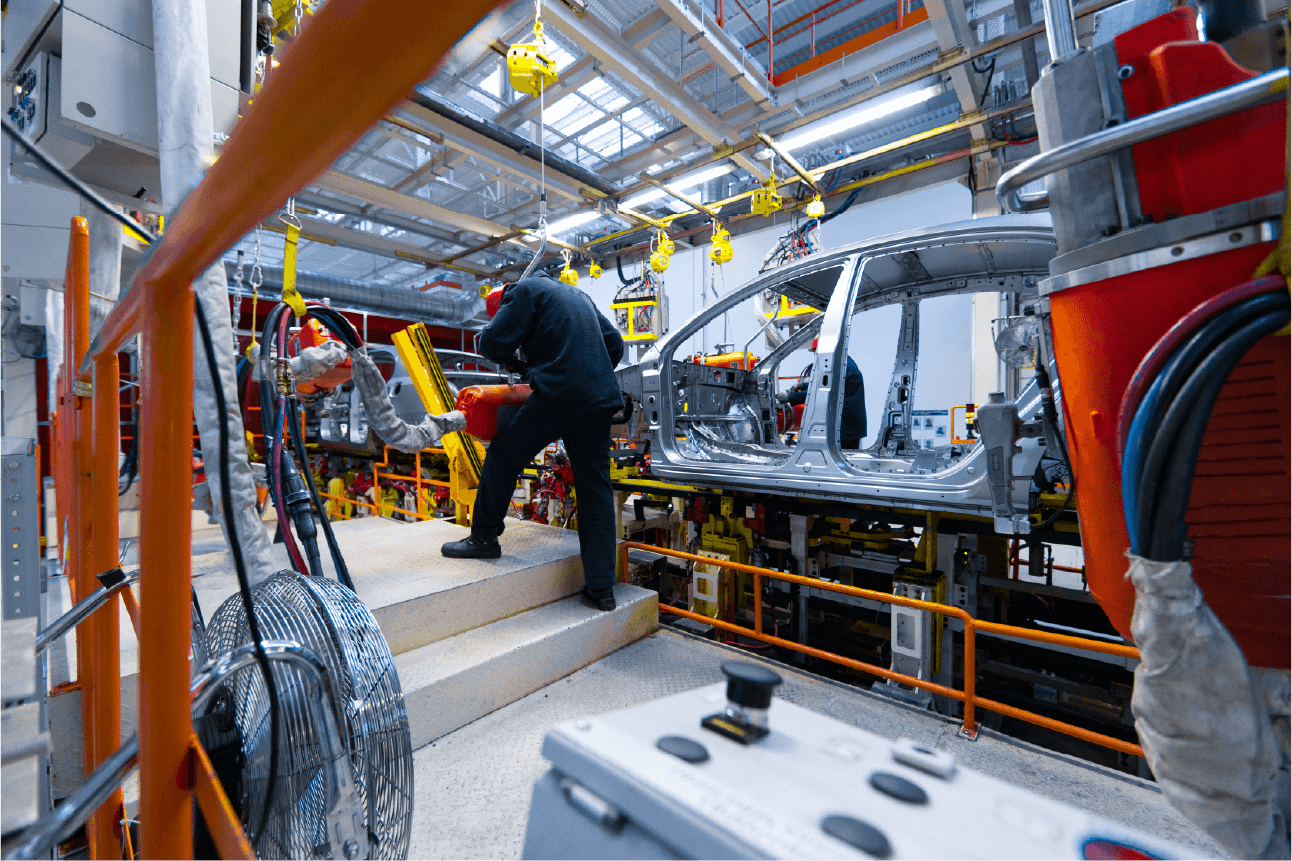Every day, countless products are manufactured worldwide, each requiring precise inspection to ensure quality and safety. Traditional inspection methods, relying on human expertise, often fall short when it comes to speed, accuracy, and consistency.
This is where the AI Visual Inspection System steps in, evolving the way industries approach quality control. By automating the inspection process with advanced artificial intelligence and machine learning algorithms, businesses can achieve exceptional levels of precision and efficiency.
Importance of choosing the right solution
Choosing the right AI-based visual inspection solution can be a game-changer for your business, transforming not only how you manage quality but also how you improve operational efficiency. With so many options on the market, understanding the key features and benefits of each system is essential to making an informed decision. In this guide, we will explore the factors you need to consider when selecting one and provide practical examples to help you choose the system that best meets your needs.
What is an AI Visual Inspection System?
An AI Visual Inspection System uses artificial intelligence to automate the process of inspecting products or components for defects. It uses the algorithm, which is the heart of the system, processing the images and identifying defects based on learned patterns. This algorithm is trained on images to differentiate between acceptable and defective products.
The inspection process begins with capturing images using cameras. These images are then analyzed by the AI algorithm, which detects defects based on predefined criteria, ensuring products meet quality standards. This automated process is faster and more reliable than manual inspections, which are often subject to human error.
Key Factors to Consider When Choosing an AI Visual Inspection System
When selecting an AI Visual Inspection System, it's important to consider several key factors to ensure you choose the best option for your needs:
1. Specific Needs and Requirements
Start by clearly defining what you need from the system. Are you inspecting large volumes of small parts or fewer, larger items? Do you require high-speed inspection or high precision? Understanding your specific needs will help you select a system that offers the right combination of visual inspection software and hardware.
2. System Accuracy and Performance
Accuracy is a critical factor for any inspection system. The AI algorithm should be capable of detecting even the smallest defects without generating too many false positives or negatives. It’s essential to evaluate the system’s performance in varied conditions to ensure it meets your accuracy standards. Look for systems that offer customizable algorithms, allowing you to fine-tune the settings to match your inspection requirements.
3. Integration and Compatibility
Your new AI Visual Inspection System should integrate smoothly with your existing production line and equipment. Make sure the system is compatible with your current hardware and visual inspection software to avoid unnecessary disruptions and costs. Seamless integration helps minimize downtime and ensures a smoother implementation process.
4. Scalability and Flexibility
Choose a system that is scalable and flexible, allowing you to adjust to changes without requiring a complete overhaul. Whether you’re increasing production, adding new products, or expanding to new facilities, a scalable system will grow with you.
5. Cost and Return on Investment
While upfront costs are an important consideration, focus on the long-term return on investment (ROI). A higher initial investment may offer better ROI through reduced labor costs, fewer defects, and improved product quality over time. Consider how the system will improve your operations and contribute to your bottom line.
6. Vendor Support and Training
Implementing a new AI Visual Inspection System requires thorough training and ongoing support. Ensure that your vendor provides comprehensive training programs and reliable support services to help your team effectively use the system and address any issues promptly. Good vendor support can make a significant difference in the success of your implementation.
Case Study
Problem:
The aircraft manufacturer faced challenges with manual inspection of carbon fiber lay-ups on aircraft wings, which was time-consuming and prone to errors due to human subjectivity, leading to high false-negative rates.
Solution:
Loopr implemented an AI model – LooprIQ Inspect to automate defect detection during the lay-up process. The system alerts operators when defects are detected, allowing them to manually inspect and resolve the issues. The AI model was trained using a custom dataset provided by the customer.
Benefits:
Elimination of Subjectivity: AI ensures consistent and objective inspection.
Efficiency: The solution reduces overall inspection time, resulting in significant cost savings.
Accurate Detection: Reduces false-negative rates by providing precise identification of defective areas on the aircraft wing.
Automated Records: Historical records, including images and timestamps, are automatically captured for review.
Types of AI Visual Inspection Systems
There are various types of AI visual inspection systems available, each tailored to different needs. Here’s an overview:
1. Fixed vs. Portable Systems
Fixed systems are designed for specific points in the production line, ideal for high-volume, continuous inspections. Portable systems provide flexibility, allowing for inspections in multiple locations or different environments, making them suitable for lower-volume or varied inspection needs.
2. 2D vs. 3D Inspection
2D inspection systems are suitable for flat surfaces and are often used in industries such as electronics, where surface-level defects are a primary concern. 3D inspection systems provide in-depth information, making them ideal for complex shapes or surfaces, such as those found in automotive or aerospace applications.
3. Single vs. Multi-View Systems
Single-view systems capture images from one angle, which may be sufficient for simpler inspections. Multi-view systems use multiple cameras to capture different angles, providing a more comprehensive inspection, especially for complex parts that require thorough analysis from various perspectives.
Conclusion
Selecting the right AI Visual Inspection System is a vital step in enhancing your production quality and efficiency. By understanding the different components, types, and key considerations, you can make an informed choice that best meets your needs and supports your business goals. Investing in the right system will ensure a high return on investment, reduced defects, and consistent quality, helping your business maintain its competitive edge.
FAQ
1. What is the typical implementation process for an AI visual inspection system?
The typical implementation process includes assessing your specific needs, selecting suitable hardware and software, integrating the system into your production line, training staff, and conducting initial testing and calibration to ensure optimal performance.
2. Does Loopr provide an AI visual inspection system?
Yes, Loopr provides an AI visual inspection system designed to enhance quality control in manufacturing. Their system utilizes advanced AI algorithms and machine vision technology to accurately detect defects, ensuring high standards of product quality and compliance.
3. What support and maintenance services does Loopr AI offer?
Loopr AI provides extensive support services, including system installation, training, regular maintenance, software updates, and troubleshooting to ensure smooth operation and minimal downtime.
4. How can I get started with Loopr's AI visual inspection system?
To get started, contact Loopr's sales team for a consultation to assess your needs and discuss the best solutions available.
5. Does Loopr AI assist with label inspection?
Yes, Loopr AI’s visual inspection software i.e. LooprIQ inspect includes specialized modules for label inspection, ensuring accuracy and compliance with industry standards.


%201.svg)

.svg)




.png)

